HAPPEN24
27 y 28 de Septiembre, Madrid

|
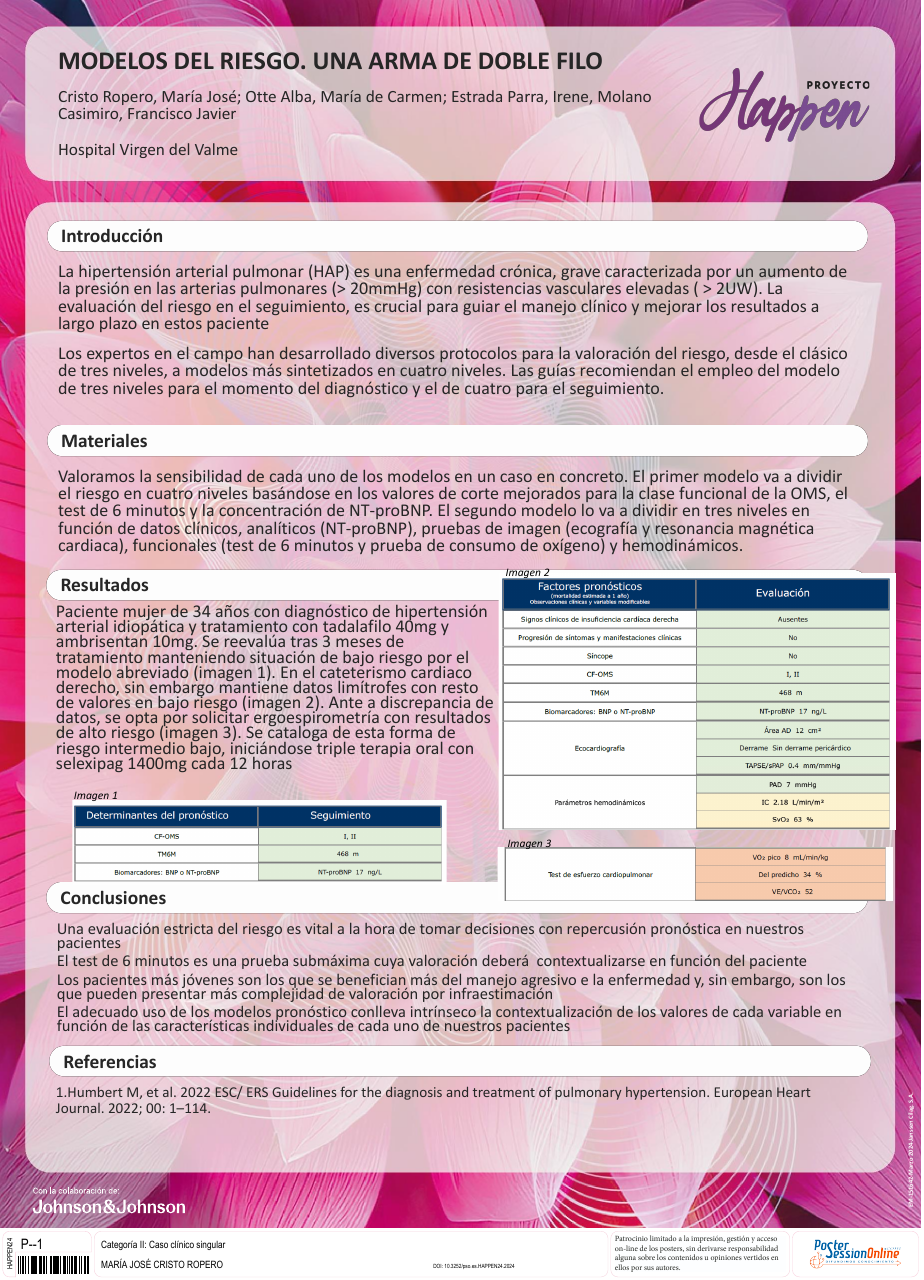
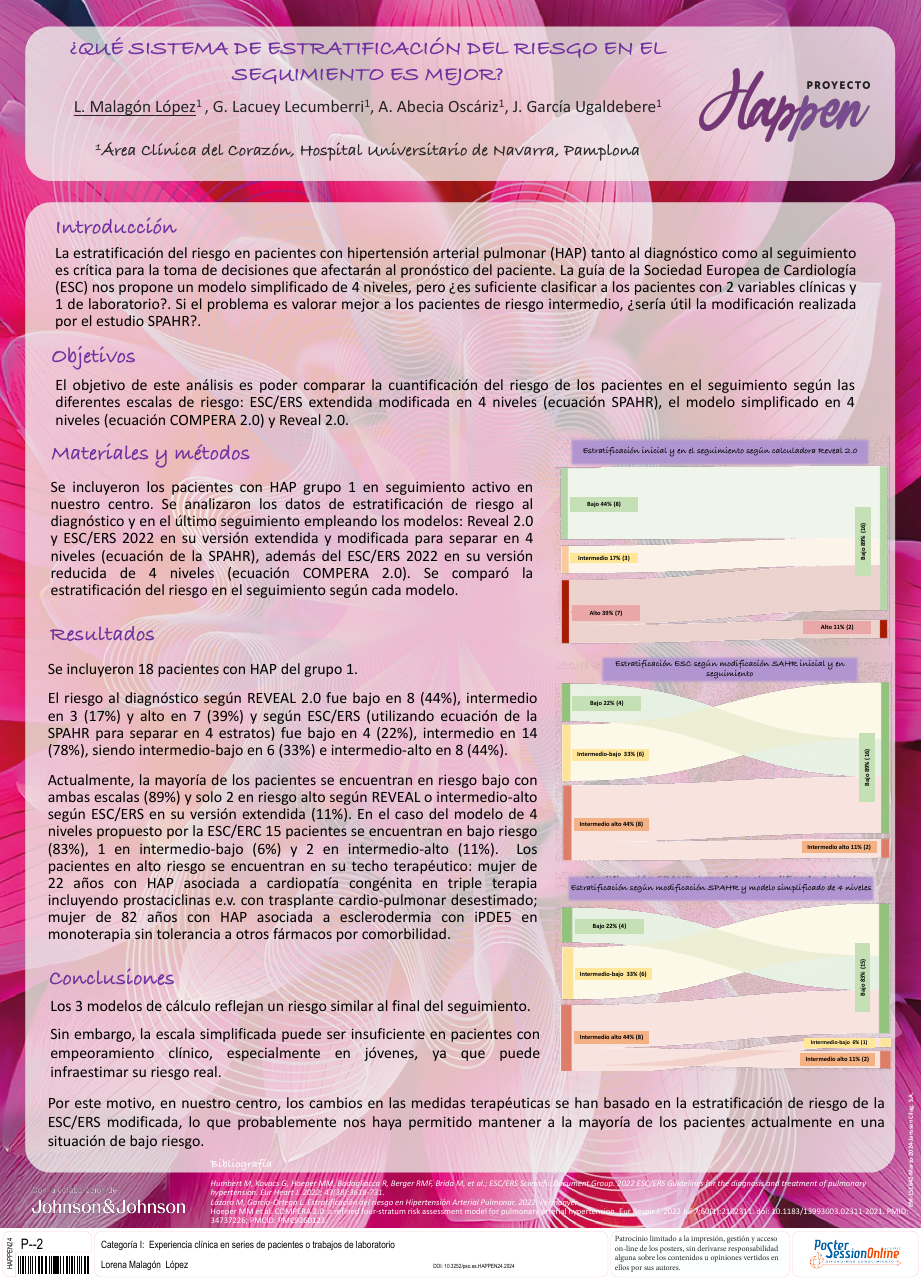
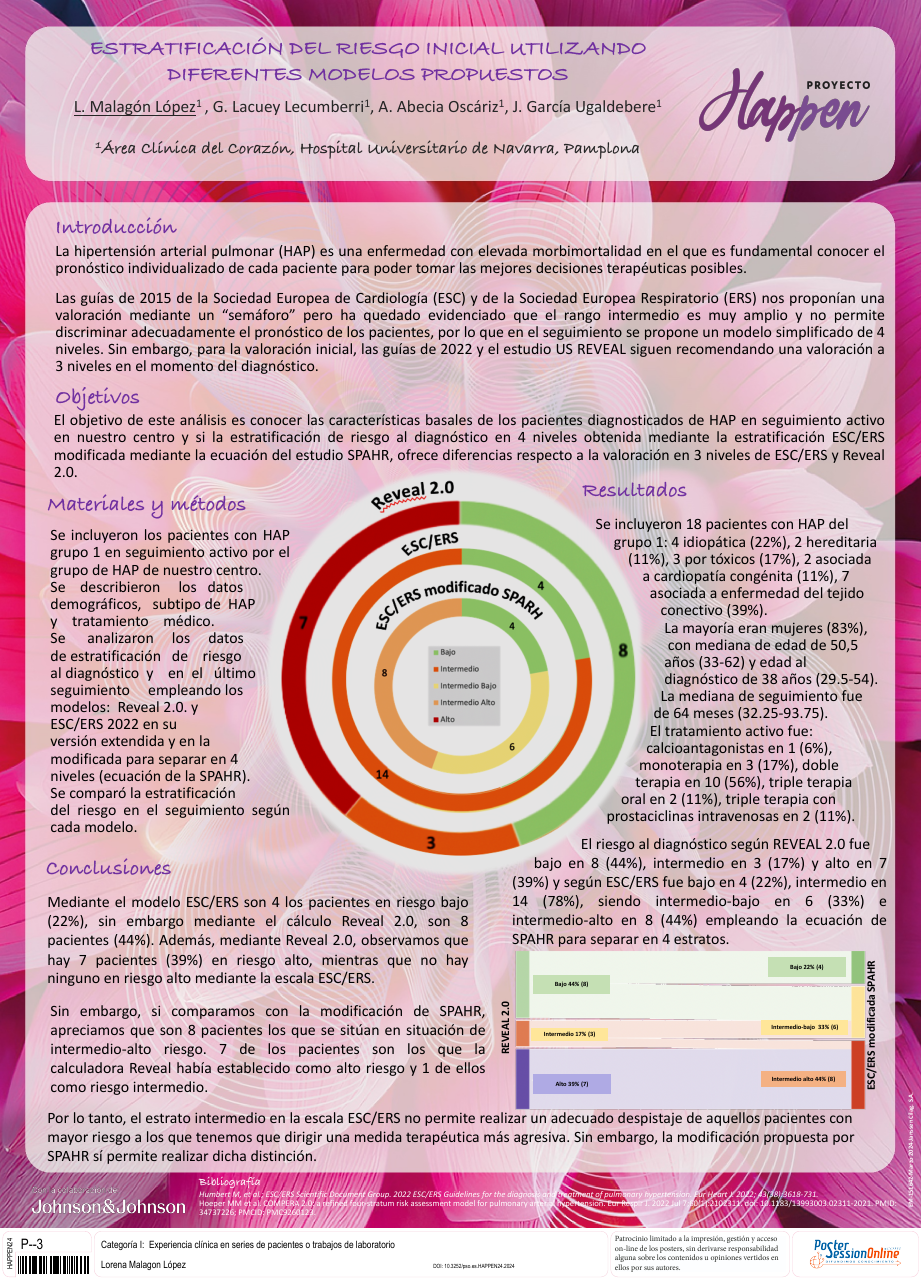
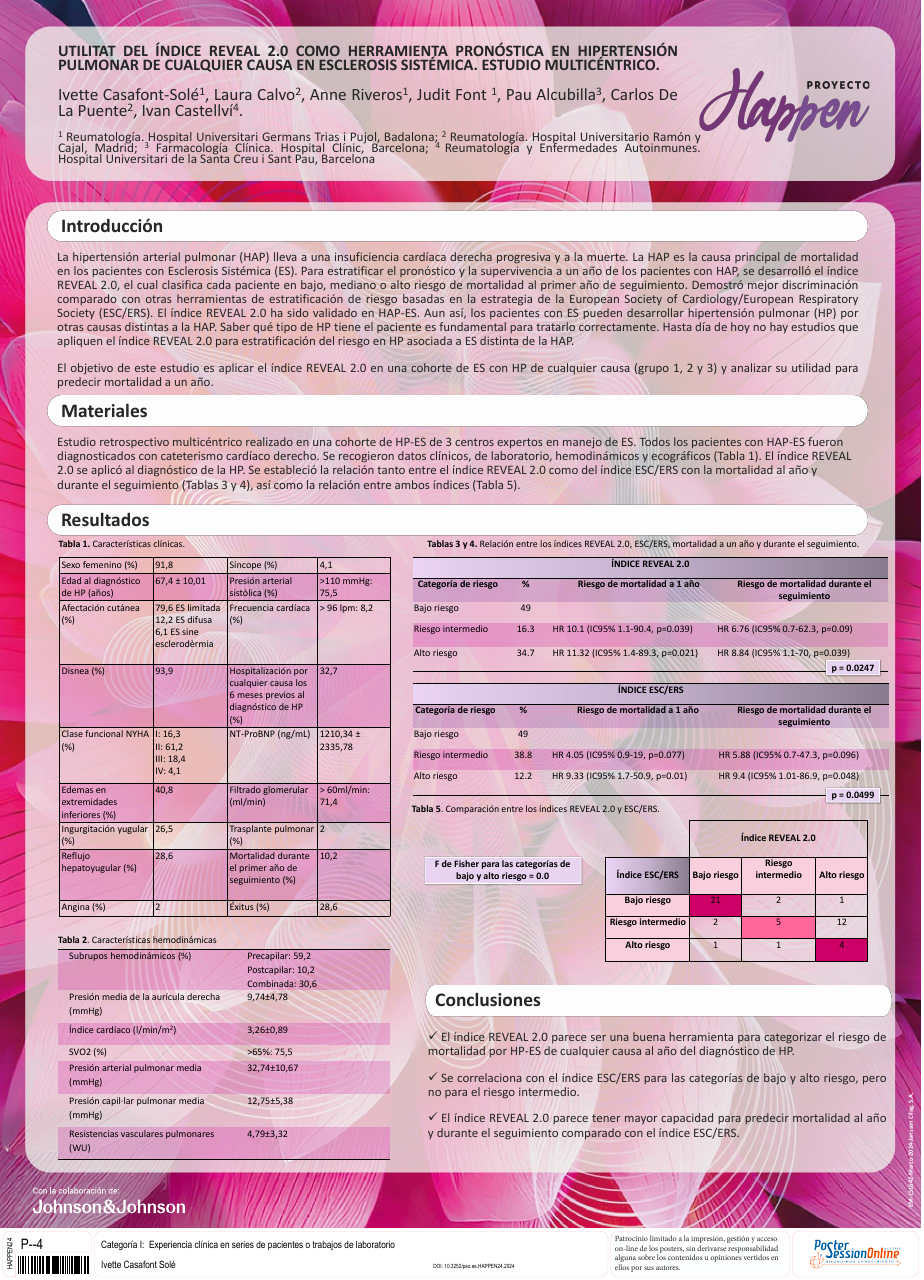
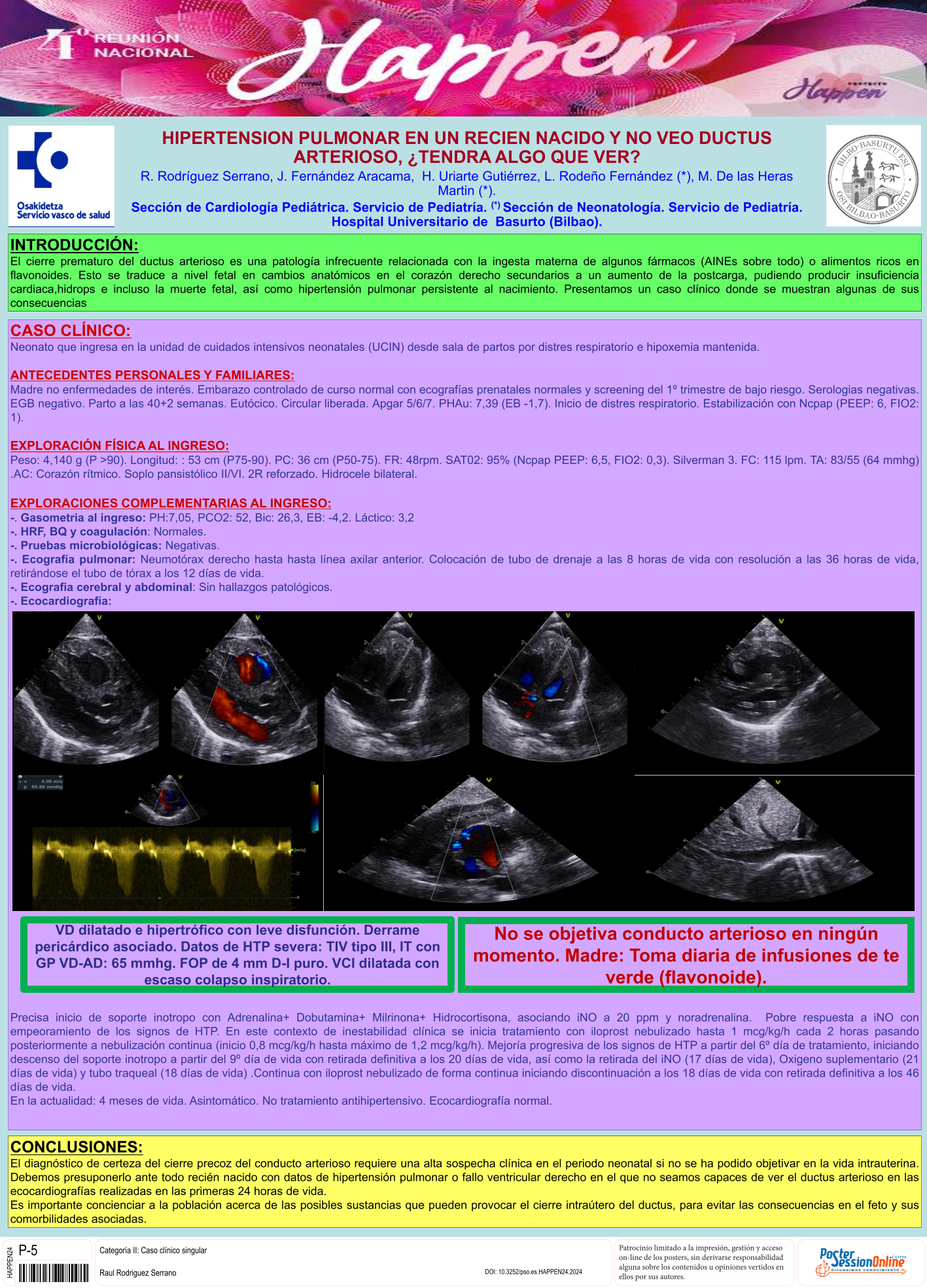
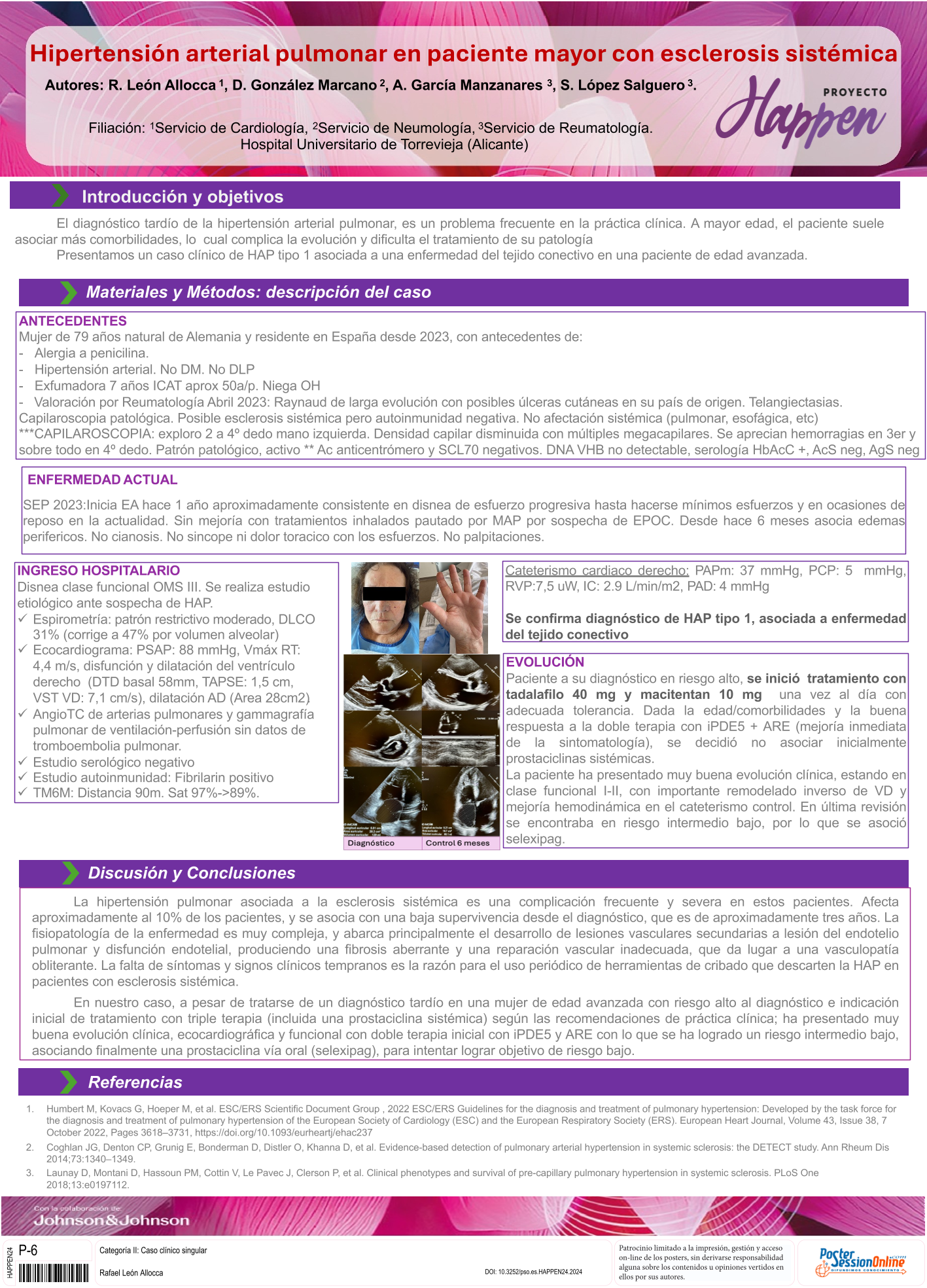

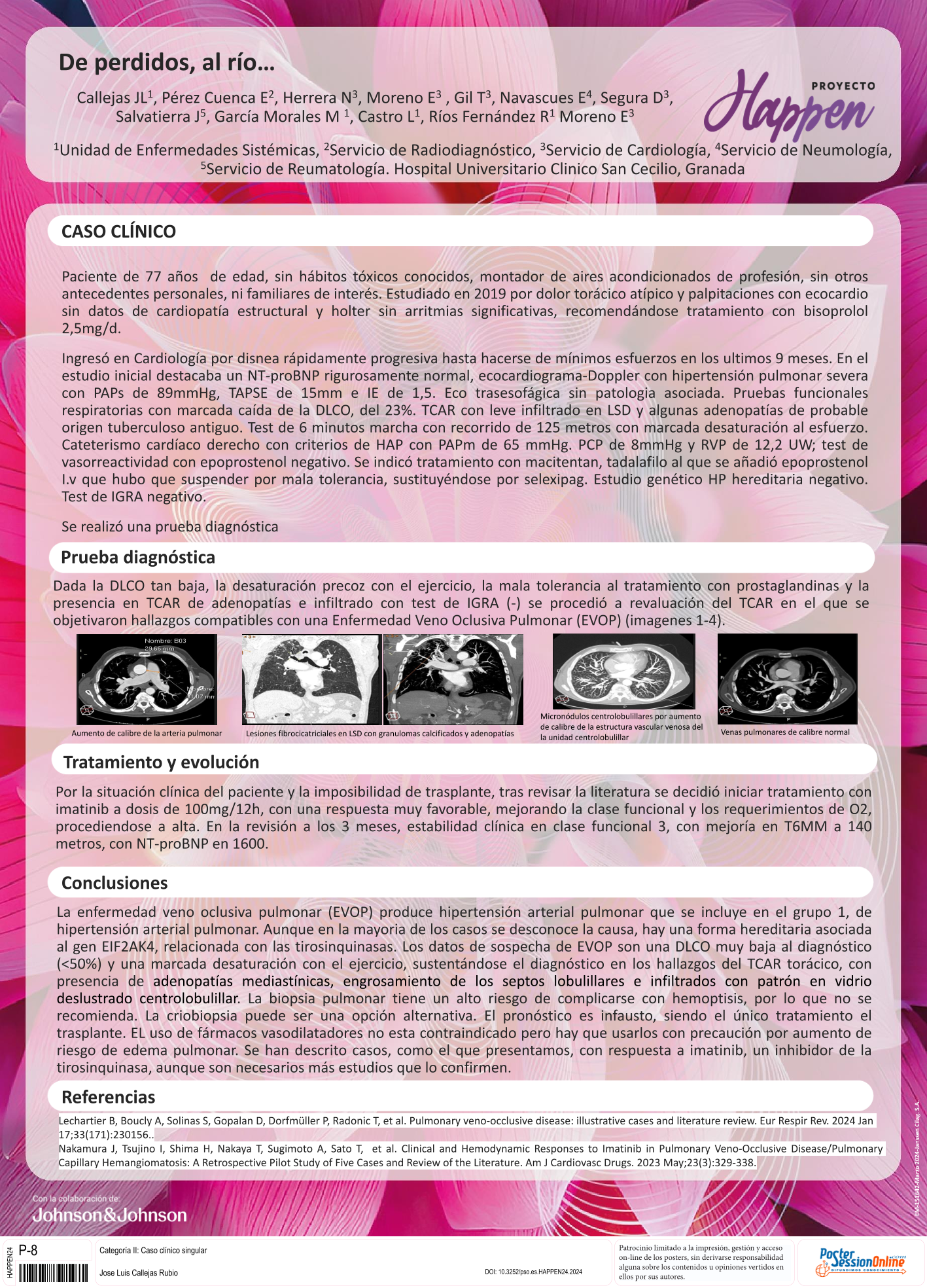

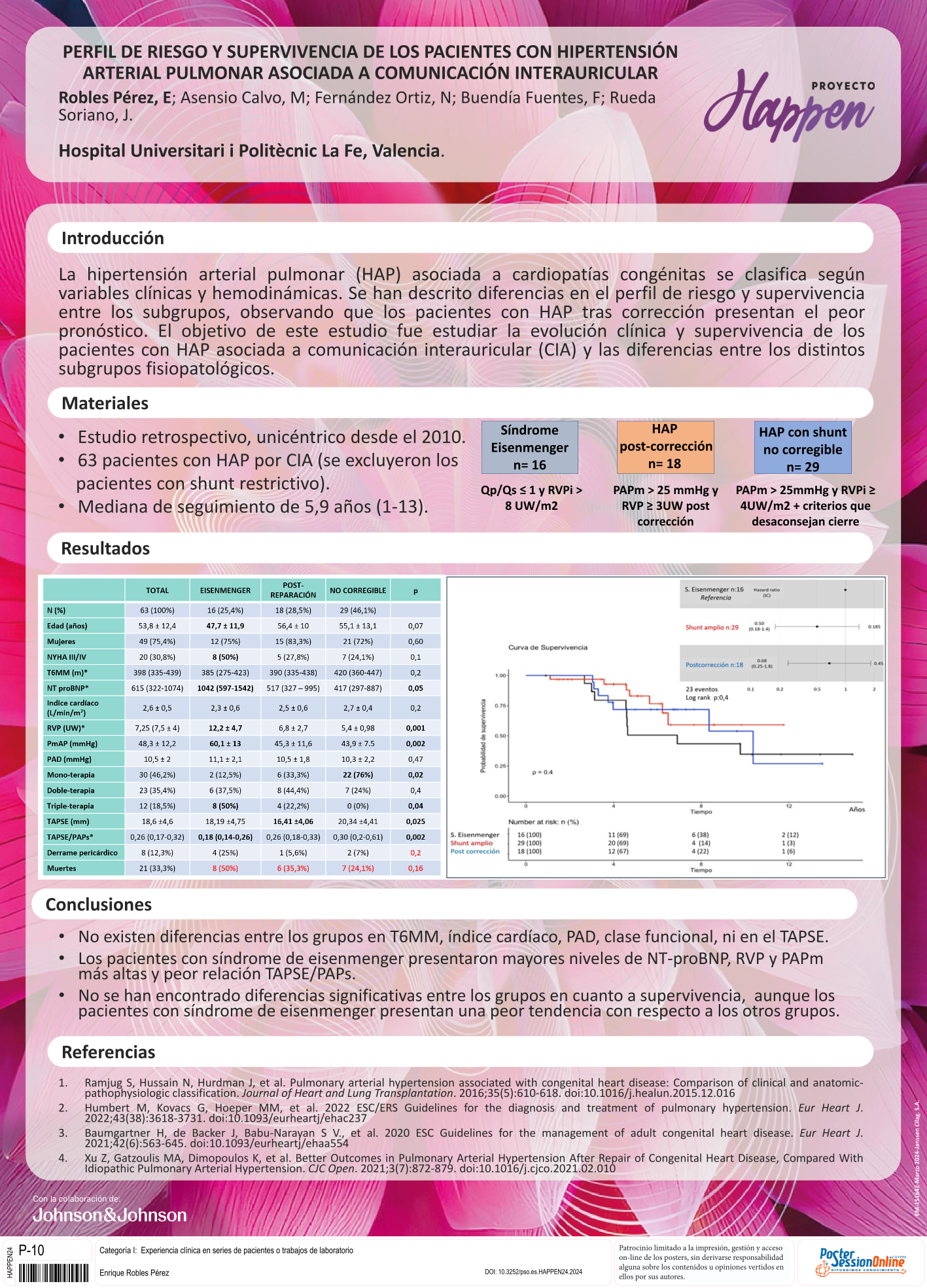
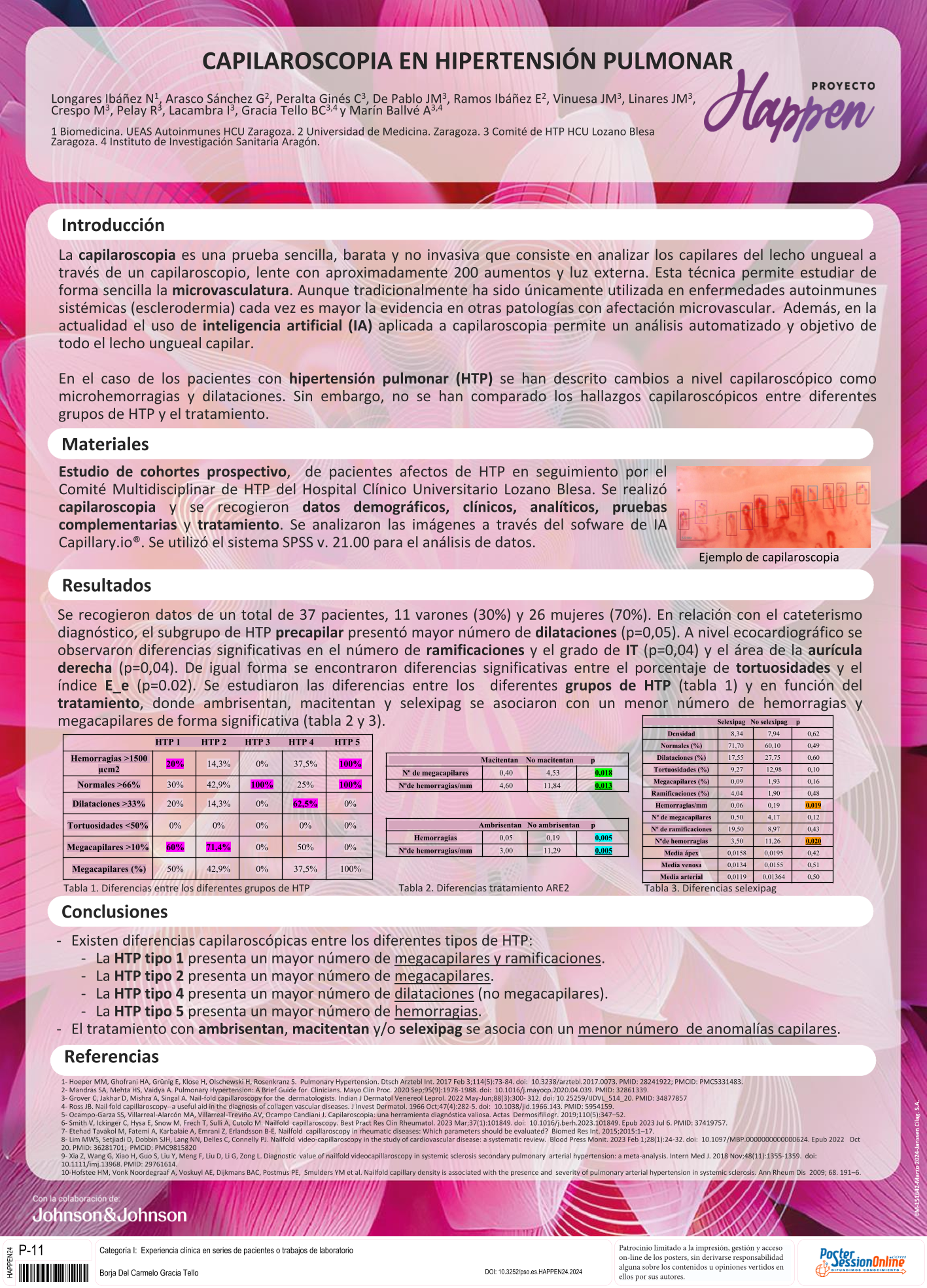

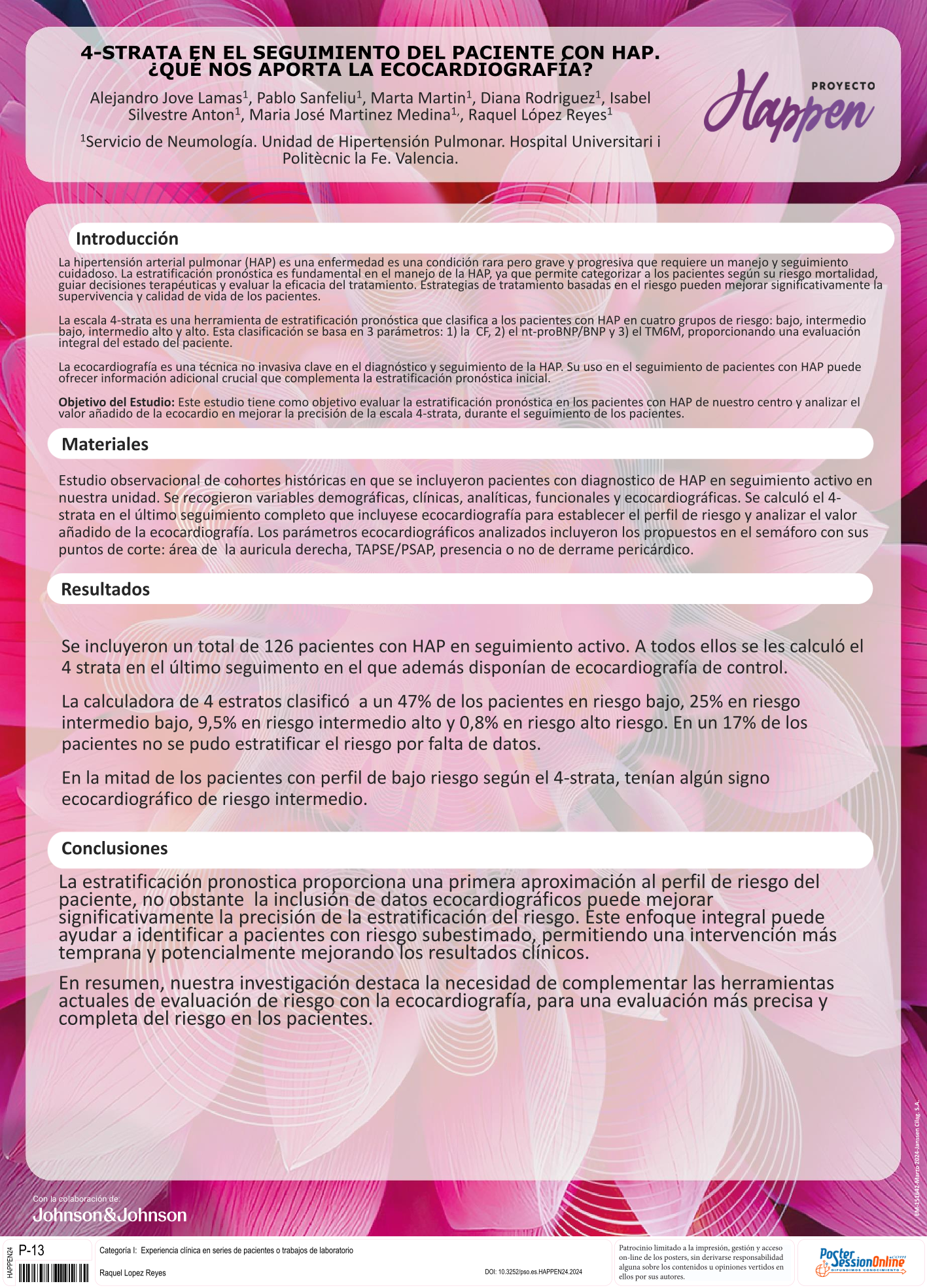
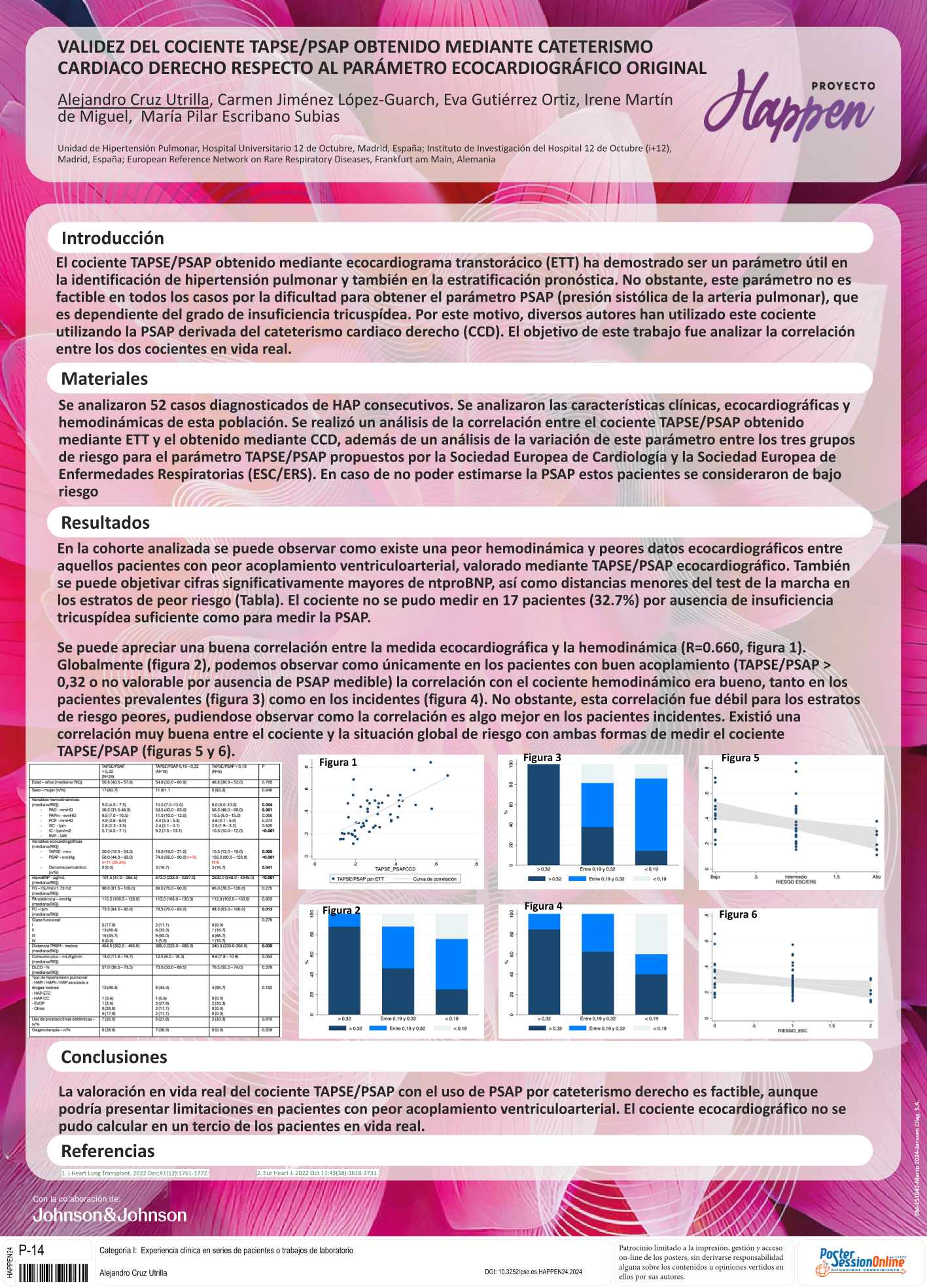
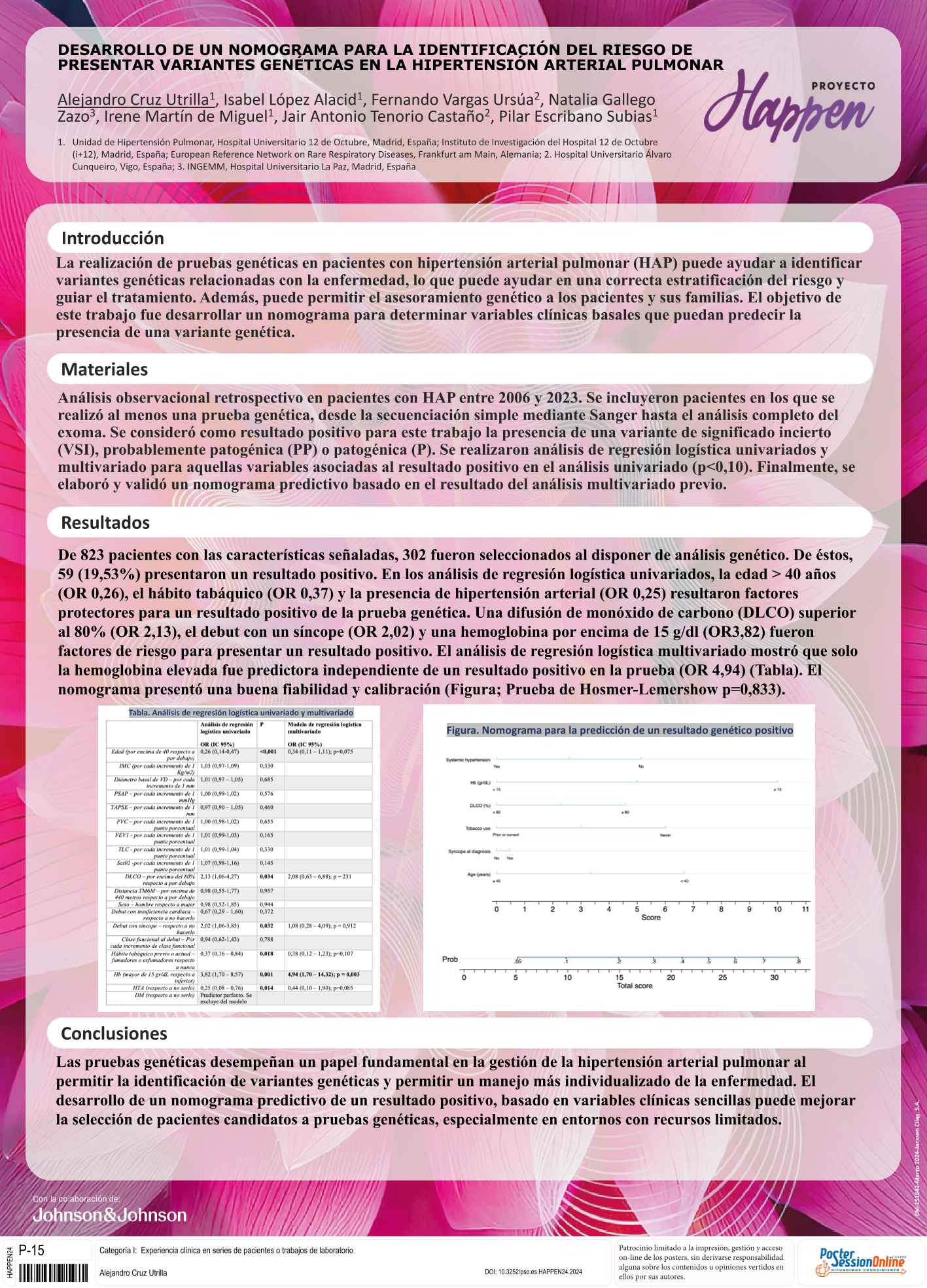
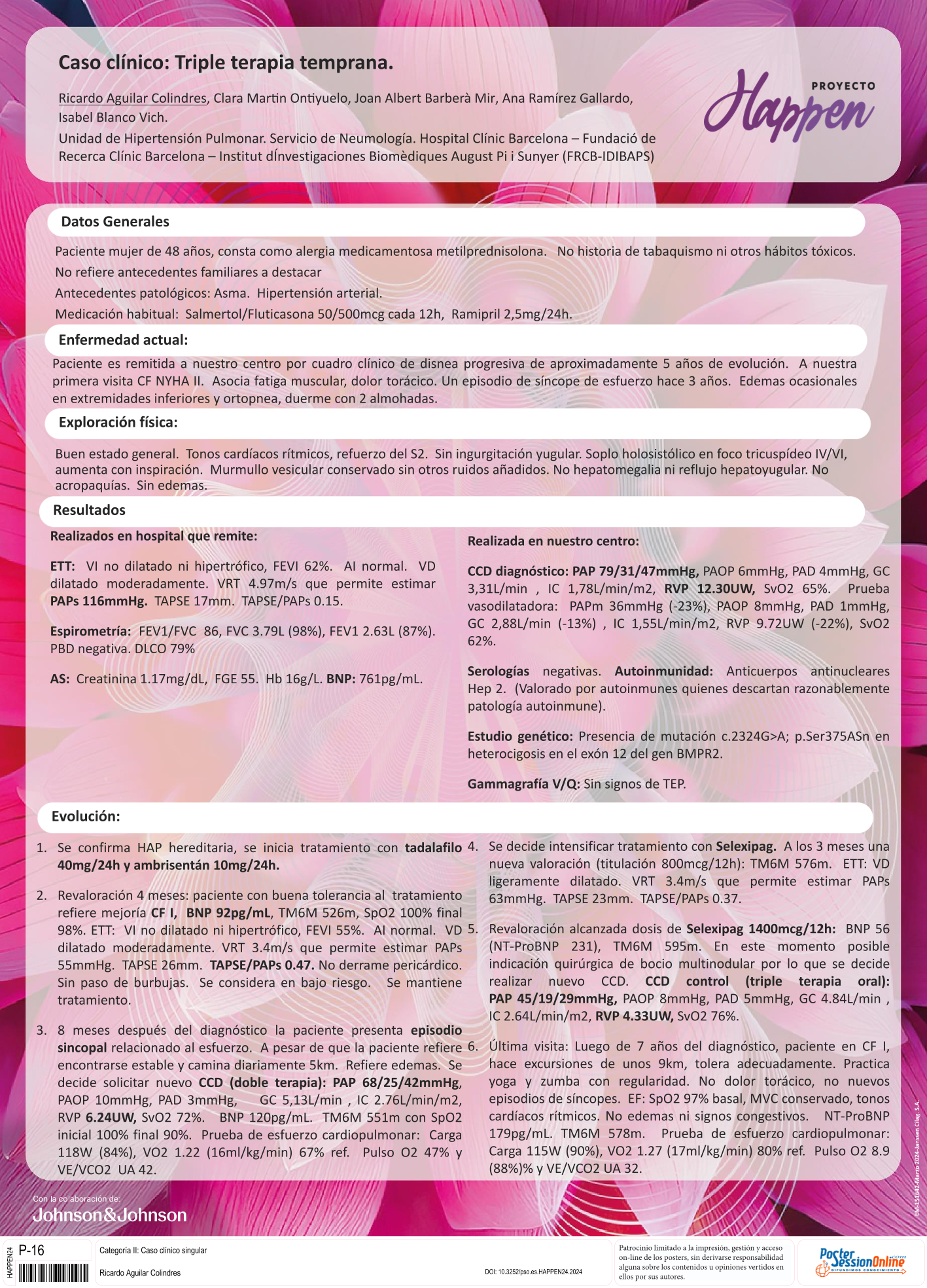
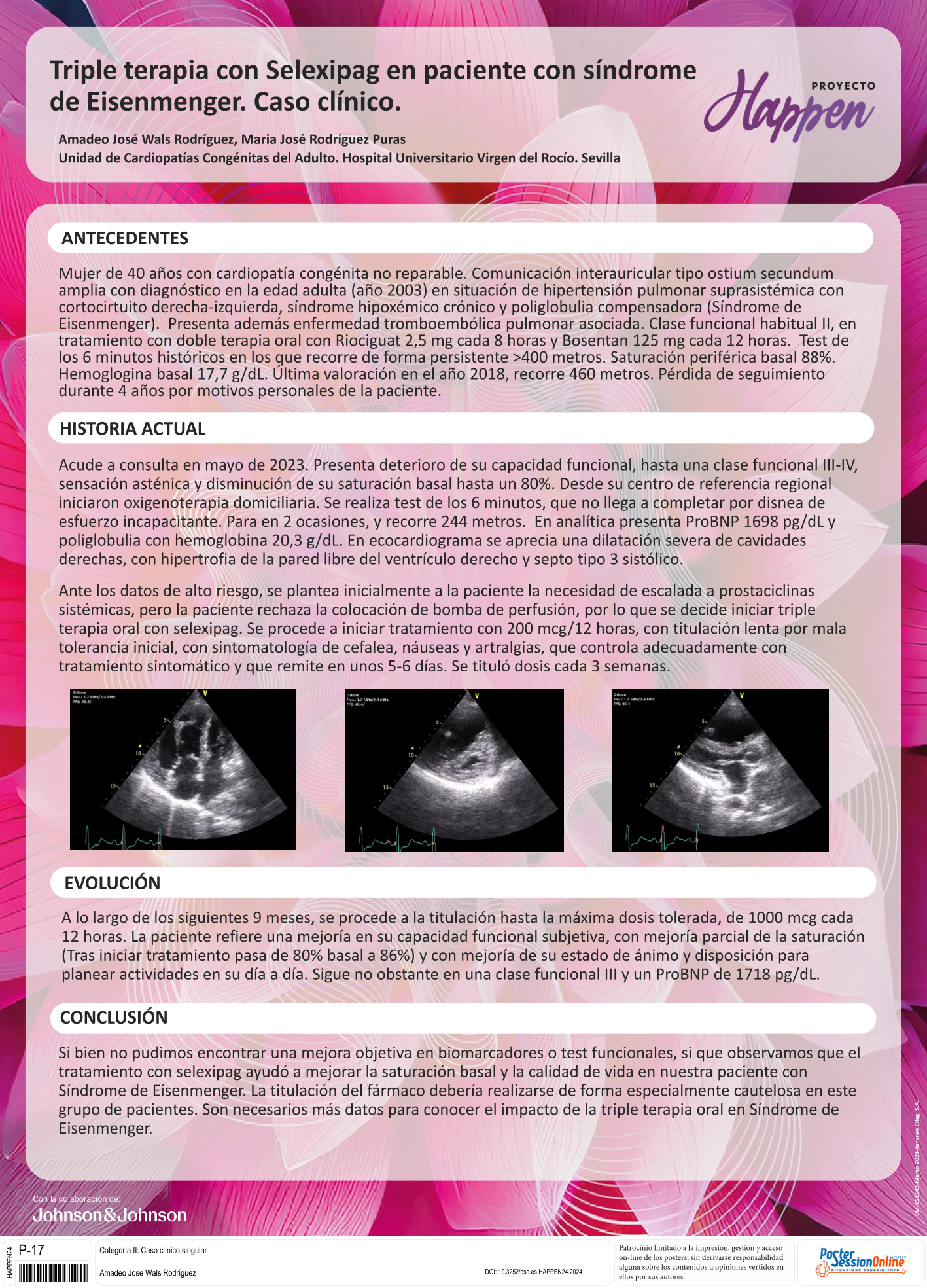
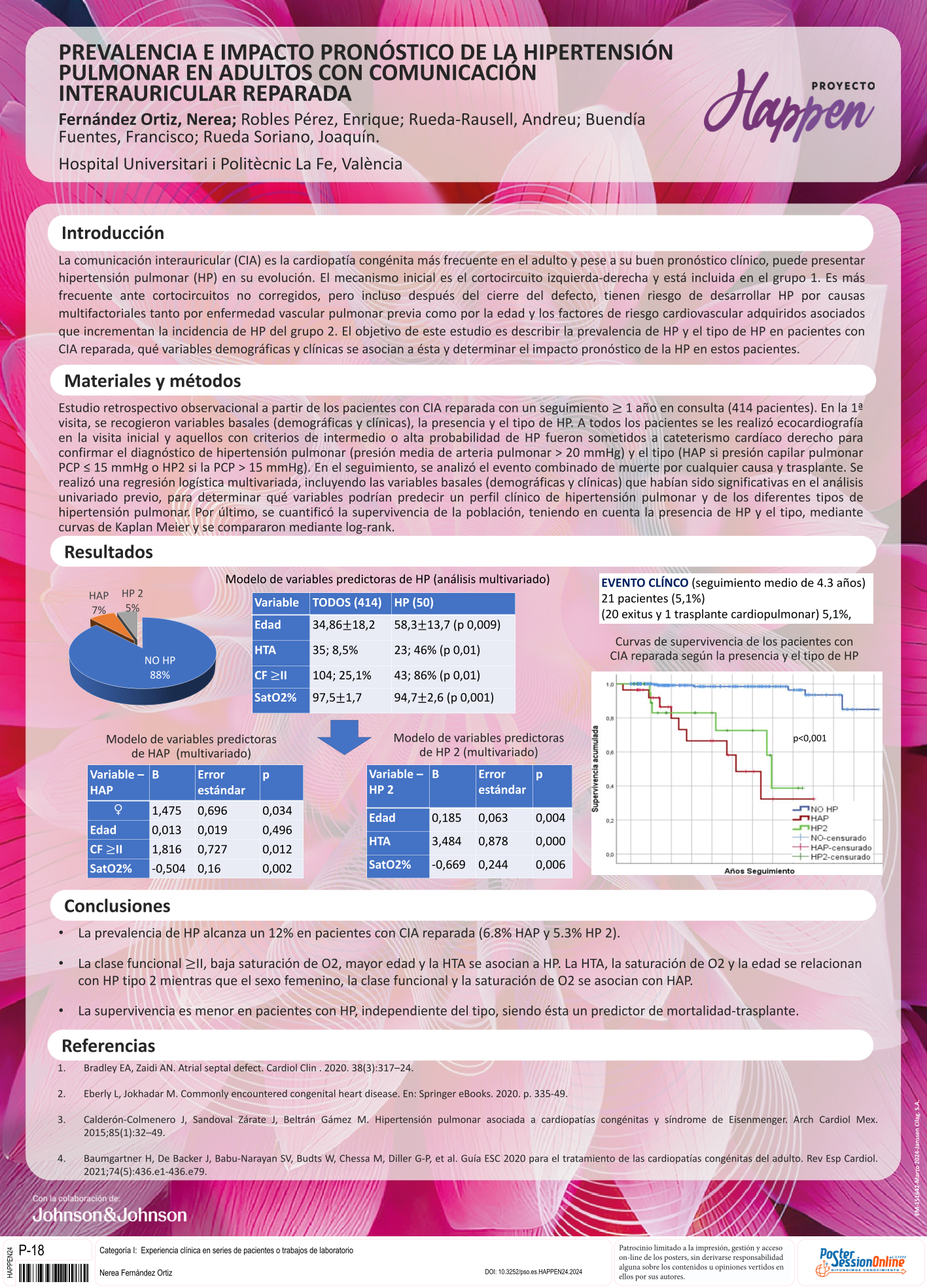

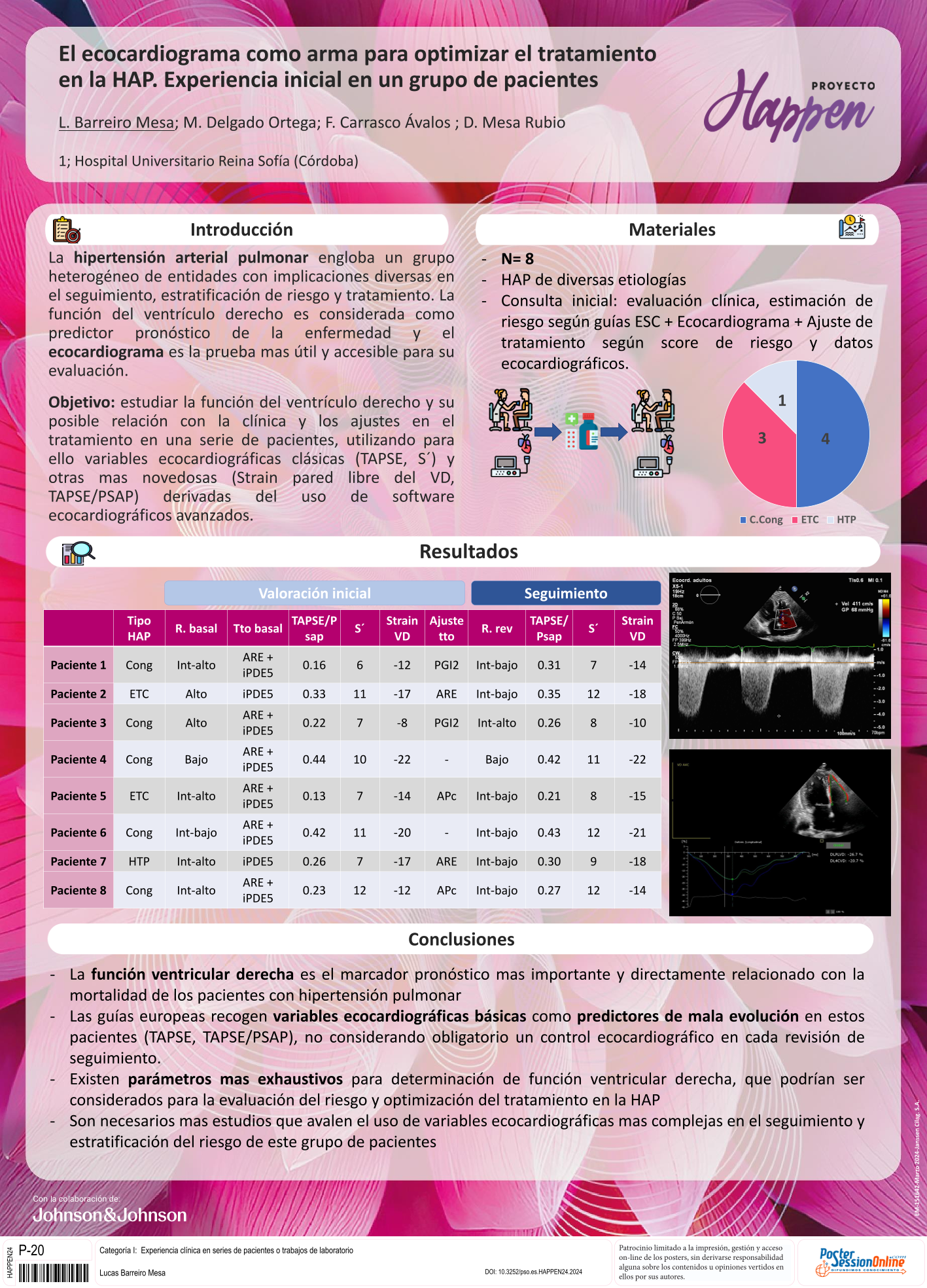
| MODELOS DEL RIESGO. UNA ARMA DE DOBLE FI.. | MARÍA JOSÉ CRISTO ROPERO.. | CRISTO Ropero, M.J.(1); Otte A.. | Categoría II: Caso clínico singular.. | - - | |
| ¿QUÉ SISTEMA DE ESTRATIFICACIÓN DEL RIES.. | Lorena Malagón López.. | Malagón López, L.(1); Lacuey .. | Categoría I: Experiencia clínica en ser.. | - - | |
| ESTRATIFICACIÓN DEL RIESGO INICIAL UTILI.. | Lorena Malagon López.. | Malagon López, L.(1); LACUEY L.. | Categoría I: Experiencia clínica en ser.. | - - | |
| UTILITAT DEL ÍNDICE REVEAL 2.0 COMO HERR.. | Ivette Casafont Solé.. | Casafont Solé, I.(1); Calvo, L.. | Categoría I: Experiencia clínica en ser.. | - - | |
| HIPERTENSION PULMONAR EN UN RECIEN NACID.. | RAUL RODRIGUEZ SERRANO.. | RODRIGUEZ SERRANO, R.(1); FERN.. | Categoría II: Caso clínico singular.. | - - | |
| HIPERTENSIÓN ARTERIAL PULMONAR EN PACIEN.. | Rafael León Allocca.. | León Allocca, R.(1); González .. | Categoría II: Caso clínico singular.. | - - | |
| RELACIÓN ENTRE EL RATIO TAPSE/PAPS Y LA .. | Ricardo Aguilar Colindres.. | Aguilar Colindres, R.(1); Mart.. | Categoría I: Experiencia clínica en ser.. | - - | |
| DE PERDIDOS, AL RIO.. | JOSE LUIS CALLEJAS RUBIO.. | CALLEJAS RUBIO, J.L.(1).. | Categoría II: Caso clínico singular.. | - - | |
| ¡PUES SI QUE HA CAMBIADO LA PELICULA...!.. | JOSE LUIS CALLEJAS RUBIO.. | CALLEJAS RUBIO, J.L.(1).. | Categoría II: Caso clínico singular.. | - - | |
| PERFIL DE RIESGO Y SUPERVIVENCIA DE LOS .. | Enrique Robles Pérez.. | Robles Pérez, E.(1); Calvo Ase.. | Categoría I: Experiencia clínica en ser.. | - - | |
| UTILIDAD DE CAPILAROSCOPIA EN HIPERTENSI.. | Borja del Carmelo Gracia Tello.. | Gracia Tello, B.D.C.(3); Longa.. | Categoría I: Experiencia clínica en ser.. | - - | |
| UPTRAVI EN HIPERTENSIÓN ARTERIAL PULMONA.. | RAQUEL LOPEZ REYES.. | LOPEZ REYES, R.(1).. | Categoría II: Caso clínico singular.. | - - | |
| 4-STRATA EN EL SEGUIMIENTO DEL PACIENTE .. | Raquel Lopez Reyes.. | Lopez Reyes, R.(1); Jove Lam.. | Categoría I: Experiencia clínica en ser.. | - - | |
| VALIDEZ DEL COCIENTE TAPSE/PSAP OBTENIDO.. | Alejandro Cruz Utrilla.. | Cruz Utrilla, A.(1); Jiménez L.. | Categoría I: Experiencia clínica en ser.. | - - | |
| DESARROLLO DE UN NOMOGRAMA PARA LA IDENT.. | Alejandro Cruz Utrilla.. | Cruz Utrilla, A.(1); López Ala.. | Categoría I: Experiencia clínica en ser.. | - - | |
| TRIPLE TERAPIA TEMPRANA.. | Ricardo Aguilar Colindres.. | Aguilar Colindres, R.(1); Mart.. | Categoría II: Caso clínico singular.. | - - | |
| TRIPLE TERAPIA CON SELEXIPAG EN PACIENTE.. | Amadeo Jose Wals Rodríguez.. | Wals Rodríguez, A.J.(1); Rodrí.. | Categoría II: Caso clínico singular.. | - - | |
| PREVALENCIA E IMPACTO PRONÓSTICO DE LA H.. | Nerea Fernández Ortiz.. | Fernández Ortiz, N.(1); Robles.. | Categoría I: Experiencia clínica en ser.. | - - | |
| CONTROL ACTIVO DE ADHERENCIA AL TRATAMIE.. | María del Mar López-Gil Otero.. | López-Gil Otero, M.D.M.(1); Ag.. | Categoría I: Experiencia clínica en ser.. | - - | |
| EL ECOCARDIOGRAMA COMO ARMA PARA OPTIMIZ.. | Lucas Barreiro Mesa.. | Barreiro Mesa, L.(1); Delgado .. | Categoría I: Experiencia clínica en ser.. | - - | |
Abstract
Thunderstorm-related asthma in patients sensitised to olea europaea pollen: twenty emergency department visits for asthmatic symptoms in one single day Losappio, Laura1; Heffler, Enrico2; Falco, Antonio1; Contento, Francesco1; Cannito, Cosimo1; Rolla, Giovanni2 1"Dimiccoli" Hospital, Emergency Department, Barletta, Italy; 2University of Torino - AO Mauriziano "Umberto I", Allergy and Clinical Immunology, Torino, Italy
Background: Associations between thunderstorm and asthma morbidity have been reported in several countries. Common to all epidemics of thunderstorm-related asthma is a significant increase in atmospheric allergen load during and immediately after a thunderstorm. Sensitization to Alternaria species or to grass and parietaria pollens has been suggested to play a key role in thunderstorm-related asthma. The only reported event of thunderstorm-related asthma in Mediterranean area was attributed to sensitization to parietaria pollen.
Method: here we describe a series of 20 patients who presented to Emergency Department in Barletta (94,000 inhabitants), Puglia (Italy) for sudden and severe asthmatic symptoms between May 27th and 28th 2010 (from15:36 to 5:02), immediately after a violent thunderstorm which occurred following a very hot morning (mean temperature: 29°C). All the patients have been subsequently visited by an allergist and underwent allergological work-up which included skin prick tests and a careful clinical history. Local pollen counts were available.
Result: Between May 10th and June 10th 2010, 86 Emergency Department asthma visits were recorded, 20 of them during the study day. Patients' mean age was 44.25 +/- 18.5 years (range: 9-81), 8/20 females, 2 smokers, 16 with a previous history of known respiratory allergy. Only two patients regularly took anti-asthma drugs. All 20 patients were sensitized to Olea europaea pollen, 7 of whom were monosensitized. Ten patients were sensitized to grass, 7 to parietaria, 5 to compositae, 5 to cypress, 5 to house dust mites, 3 to dog and 1 to cat danders. No patient was sensitized to Alternaria. Mean pollen count was 17 granules/m3 for Olea europaea, 6 granules/m3 for grass pollen.
Conclusion: This is, in our knowledge, the second epidemic of thunderstorm related asthma described in Mediterranean area and the first one in which sensitization to Olea europaea played a key-role. In conclusion, our report indicates that thunderstorm asthma may involve different allergens (not only fungal spores and grass or parietaria pollen) in different geographic areas, depending on the seasonality of thunderstorms and allergenic pollen.